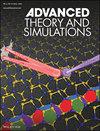Impact of Electro-Magnets on Enhanced Hall-Effect Amplifier Nanoscale Device (HAND) – Part 2: Optimization Review
IF 2.9
4区 工程技术
Q1 MULTIDISCIPLINARY SCIENCES
引用次数: 0
Abstract
A series of complex, complementary numerical and analytical analyses are performed toward the challenging fabrication of the next generation of a nanometric device entitled hall amplifier nanoscale device (HAND). This nanoscale device, based on the well-known macro–Hall effect, possesses two modes of operation: Amplification mode, using a direct current (DC) applied voltage, and Mixer mode, using an alternating current (AC) applied voltage. Per the Hall effect, the device receives a current as an input, and creates a voltage as an output, creating low input impedance, as well as high output impedance. Models are developed to forecast the device's functionality, quality and reliability, with a focus on phenomena such as local heat transfer and mega-magnet feasibility inside integrated circuits. The pre-processing optimization study focused on two main areas (among others): The material composition of the device (e.g., superconductors, ferromagnetic materials, and graphene), and its geometry (e.g., bar, coil, shape, dimensions, and more). As compared to existing Hall effect-based micro- and nanoscale sensors and devices, HAND presents broader opportunities with its two modes of operation, with possible usage in electronic circuits at very high frequencies (tens of Terahertz (THz)), increasing computing rates in the microelectronics industry.

求助全文
约1分钟内获得全文
求助全文
来源期刊

Advanced Theory and Simulations
Multidisciplinary-Multidisciplinary
CiteScore
5.50
自引率
3.00%
发文量
221
期刊介绍:
Advanced Theory and Simulations is an interdisciplinary, international, English-language journal that publishes high-quality scientific results focusing on the development and application of theoretical methods, modeling and simulation approaches in all natural science and medicine areas, including:
materials, chemistry, condensed matter physics
engineering, energy
life science, biology, medicine
atmospheric/environmental science, climate science
planetary science, astronomy, cosmology
method development, numerical methods, statistics
 求助内容:
求助内容: 应助结果提醒方式:
应助结果提醒方式:


